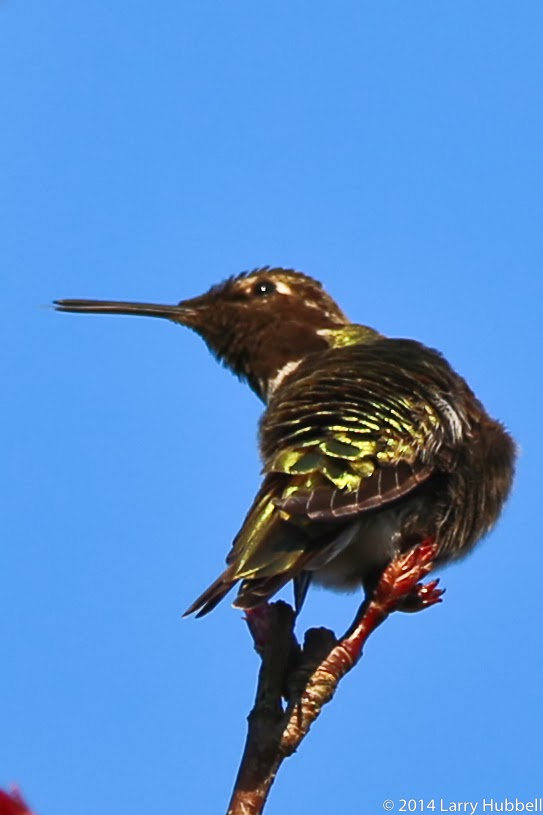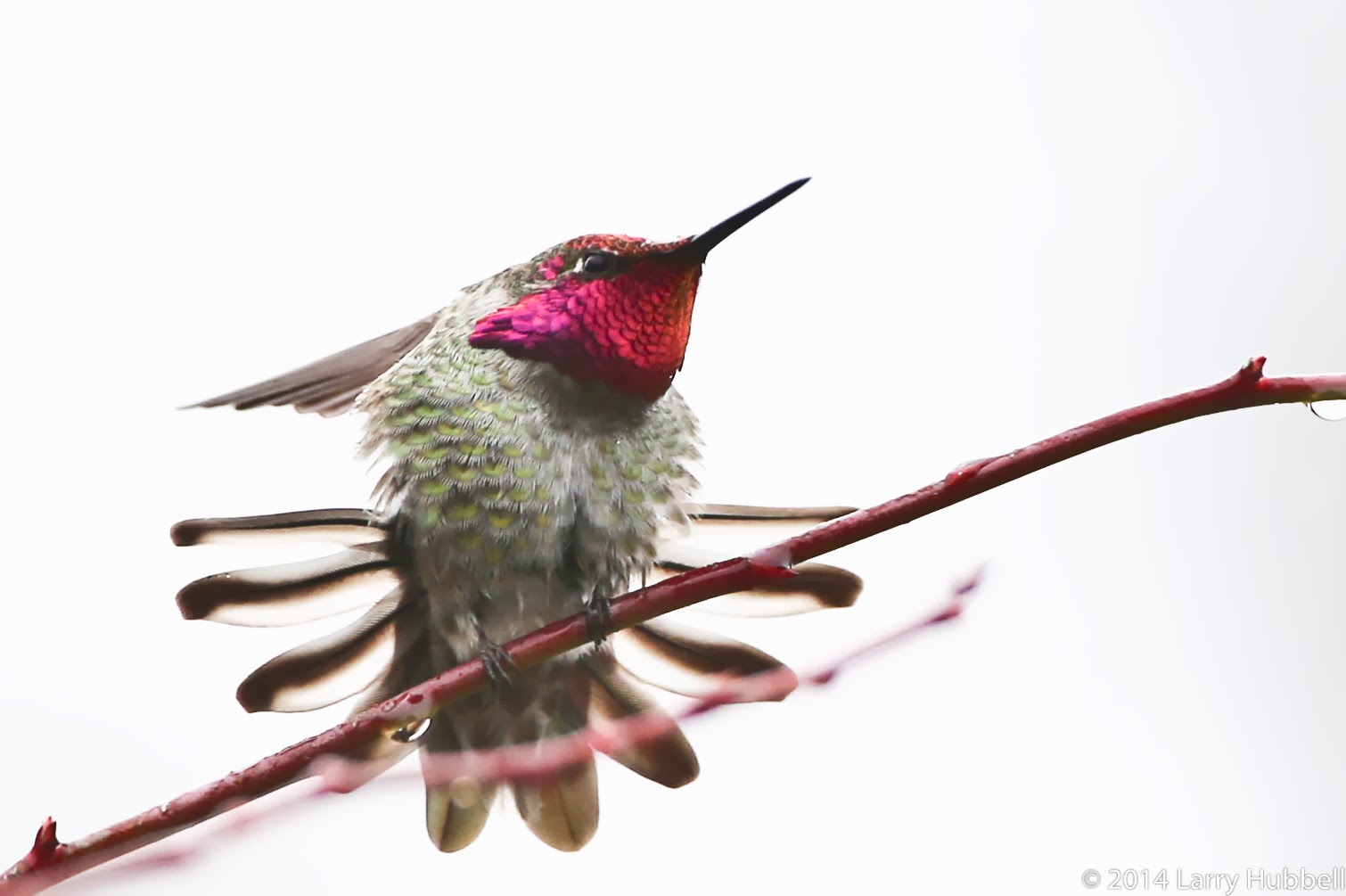Most likely this Anna's hummingbird has been faithfully defending this same territory for a couple of years.
This week Foster's only concession to the weather was on the one morning when the rain was particularly hard, he moved down from the tip-top most windblown branch, to one about 4 feet lower that was slightly more protected.
Looking back at the last 3 photos it is interesting to note the color changes in his iridescence as Foster changes the angle of his head.
A quarter mile away near the WSDOT peninsula, another male is nearly as regular in protecting his territory. In his case he almost always sits with his back to the sun, which does not allow the iridescence to reflect the brilliant red colors. It makes one wonder if this is a difference in the sensitivity of their eyes, a difference in their personalities or maybe it is because the closest trail to the second bird passes to the north and both birds are simply being careful in their sentry duty.
…he looks up…
…and he looks right at you. He is not nearly as skittish as the WSDOT bird. It is funny but I cannot imagine the WSDOT bird attacking a human. On the other hand, I would not be surprised at all to see Foster come flying straight at an intruder who ventured too close. It really does seem like each bird has its own personality. Before you proceed, did you happen to notice anything a little odd in the photo above?
Foster was using his right foot to scratch around his right eye. This is another case where you do not want to try this at home. It hurts just thinking about it.
In this photo you can see the tip of Foster's tongue. He can stick it out so that it is twice as long as the tip of his beak. He stuck it out rapidly four or five times while he was just sitting on the branch. There did not seem to be anything nearby in the air. Maybe he was catching something too small for my eyes to see.
WSDOT stretches when the sun comes out...
…and Foster stretches when the rain lets up a bit.
If you have the courage to go out in the rain and look Foster in the eye, here is where you want to go. Start in the Arboretum north of the Don Graham Visitor's Center. Where Arboretum Dr intersects N.E. Foster Island Rd, follow the trail towards Foster Island for a couple hundred feet. At the overlook, e.g. the first bench, take a seat. With your binoculars carefully scan the top of the brush (willows I believe) just fifteen feet in front of you.
This week not only has Foster been there on a regular basis, but on Friday he provided audio to go along with the view. When the sun came out a bit he started singing. His song was similar to the second song on Cornell. To hear it, click here.
Later he was diving straight down and doing his "J" hook turn at the bottom. As he made the turn he used his tail feathers to make a loud chirping or squeaking sound. If you have never seen and heard the display it is impressive. It is also interesting to read about how this sound was determined to not be a vocalization. To read all about it, click here.
Have a great day on Union Bay…where nature lives in the city!
Larry

















Great shots! I had no idea the "red" took on so many different shades from different angles.
ReplyDeleteWhen I was at my mom's house near Seward Park yesterday, we watched an Anna's doing laps around the house, between two perches, taking time at each to sing a little song. We were amazed by his energy and stamina.
They are amazing. I read the other day that their body temp is 107 degrees. If that is true they would feel red hot as well as looking red hot. :-)
Delete